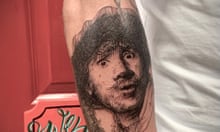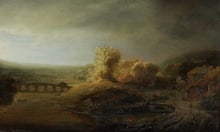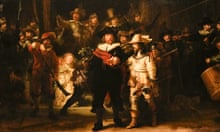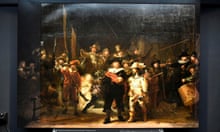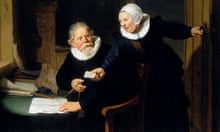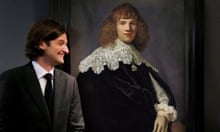The Night Watch by Rembrandt has enraptured millions visiting Amsterdam’s Rijksmuseum and its previous homes over the centuries, dazzling with its scale and fine detail.
But it is only from today, thanks to the use of artificial intelligence to recapture some of the Dutch master’s genius, including the sweep of his brush strokes and perspective of his eye, that it can for the first time in 300 years be enjoyed in its complete form.
In 1715, three-quarters of a century after it was painted, the canvas was trimmed – 60cm (2ft) cut from the left side of the painting, 22cm (9ins) from the top, 12cm from the bottom and 7cm from the right – so that the masterpiece might fit between two doors at Amsterdam’s city hall.
But using high-resolution photography of what is left of the original, computer learning of Rembrandt’s techniques and a contemporary copy of the full painting by Gerrit Lundens hanging in London’s National Gallery, the Rijksmuseum in Amsterdam was able to reproduce the work in all its glory.

“It is spectacular because what Rembrandt painted was Captain Frans Banninck Cocq ordering his lieutenants to march out and that is now exactly what you see,” said Taco Dibbits, director of the Rijksmuseum.
“With the addition especially on the left and the bottom, an empty space is created in the painting where they march towards. When the painting was cut [the lieutenants] were in the centre, but Rembrandt intended them to be off-centre marching towards that empty space, and that is the genius that Rembrandt understands: you create movement, a dynamic of the troops marching towards the left of the painting.”
Other new aspects include three figures on a bridge: two militiamen and a young boy. A helmet worn by a militiaman on the extreme right of the painting is completed and a space above the standard emerges, making the motion of the ensign as he raises the company’s colours all the more convincing. It can also be seen more clearly that a boy in the left foreground is grasping a balustrade and running away, ahead of the militia.
“It is wonderful to be able to now see with our own eyes The Night Watch as Rembrandt intended it to be seen,” Dibbits said.
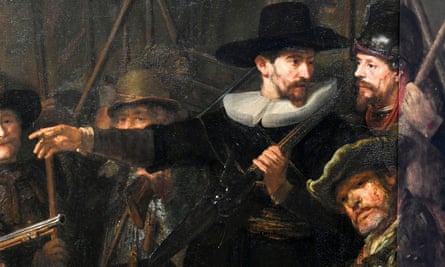
Lundens’ copy, painted within 13 years of the uncut original, was a passable one, but scientists working with the computers discovered he must have been sitting on the left side of the painting, creating distortions in perspective. He used slightly different mixes of paint and his work has aged rather differently to The Night Watch over time.
A relatively new technology known as convolutional neural networks, a type of AI algorithm that helps computers understand images, was able to correct all these failings when recreating the lost parts pixel by pixel. Crucially, the computers were able to learn how to reproduce the very strokes of Rembrandt’s brush, to ensure they are as close as possible to how the painting appeared three centuries ago.
Dibbits said: “As part of our renovation of The Night Watch, last year we took the most detailed photograph of the painting ever and we had a lot of information.
“We did three types of algorithm: one to single out the perspective distortions and to correct those; the second to recognise the colour scheme of the original and to project that on the pieces that are missing; and the third one is the brushstrokes – the technique that Rembrandt used. Then you get a computer reproduction that looks as much as possible as The Night Watch
“We printed out on canvas in scale and attached to the original painting, so for now, for three months, you will be able to see the original composition as Rembrandt intended, and it is quite spectacular. It is seamless.”

Rembrandt Harmenszoon van Rijn completed The Night Watch in 1642, having been commissioned by Amsterdam’s civic guard – whose job was to protect the city from the Spanish and from religious unrest – to paint a masterpiece for its new banqueting hall at its headquarters, the Kloveniersdoelen.
In the late 17th century the militia became something of an irrelevance, and its headquarters variously became a gentlemen’s club, auction house and a hotel. The painting was moved to the city hall for its protection where it was cut down to 4.57 metres wide by 3.96 metres high (15x13ft).
Dibbits said: “I am always hoping that somebody will call up one day to say that they have the missing pieces. I can understand that the bottom part and top might not be saved but on the left hand you have three figures, so it is surprising that they didn’t surface because at the time in 1715 Rembrandt was already much appreciated and an expensive artist.”
The new additions to the painting will not be on show beyond the three-month period as Dibbits said he did not want to “trick” the viewing public into thinking they were seeing the original in its fullness. The difference between Lundens’ work and the newly augmented original was, he said, between an “artist’s interpretation” and “a scientific” one.
“It is very exciting to see.”

